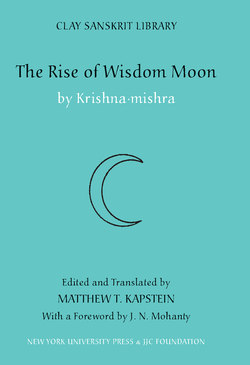Читать книгу The Rise of Wisdom Moon - Krishna mishra - Страница 32
На сайте Литреса книга снята с продажи.
Оглавлениеintroduction
hoba inscription and “The Rise of Wisdom Moon” make clear, however, is that Kirti·varman was installed (or reinstalled) following Karna’s defeat by the resurgent Chandellas. As we have seen above, this appears to have occurred during the 1060s, a period during which Karna’s fortunes in general had begun to turn.
As the play affirms, but without a confirming record being found in the extant inscriptions, Kirti·varman’s success was due to the heroic action of his “natural ally” (sahajasuhrt) Gopala. Discounting Taylor’s suggestion that this was but a reference to the divine aid of Krishna, we must assume that the testimony of the play is in essence true, for it is hardly possible that a literary work ascribing a royal restoration to a subsidiary lord could have circulated—and indeed present itself as a work to be performed before the king—if the court was not substantially in accord with the account given there. The description of Gopala as Kirti· varman’s “natural ally” has sometimes been regarded as supplying a plausible explanation in this case, and, as some historians have noted, the term in fact had two precise significations in ancient Indian political theory, referring either to a king who was one’s enemy’s enemy, or to the lords and retainers belonging to one’s maternal clan.5 It seems therefore that Gopala must have been one of Kirti· varman’s maternal uncles or cousins. I think that we can go beyond this, however, and suggest as an hypothesis that, given the unusual succession from elder to younger brother, and the likelihood in the light of what else may be known of Chandella genealogy, that Kirti·varman must have been rather young, perhaps even a child, when he succeeded
xxx
